Master Internet Marketing Acronyms 17 Essential Terms
Terms Every Beginner Must Know
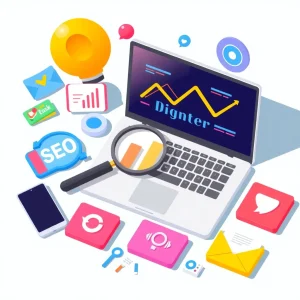
If you’ve ever sat in a meeting or scrolled through a marketing blog and felt like everyone’s speaking in code, you’re not alone. Internet marketing is packed with acronyms. But here's the truth: mastering those acronyms is one of the fastest routes from newbie to confident marketer. Think of it like learning the secret handshake of the Internet Profit Success club.
Below, I’ll walk you through 17 internet marketing acronyms (with explanations, action steps, and real examples) so you can stop feeling lost and start sounding like a pro. We’ll also sprinkle in the related phrases “digital marketing acronyms” and “marketing abbreviations for beginners” to keep your SEO game strong.
Why learning internet marketing acronyms matters
When you don’t know what someone means by “CTR” or “CRO,” two things happen: you feel insecure, and you lose momentum. But when you do know, you move faster. You can read reports, communicate with teams, make smarter decisions, and even uncover hidden insights in your data.
These aren’t just fancy labels, they’re building blocks of your strategy. Each time you see a chart with “ROI,” or someone talks about doing “A/B testing,” you’ll now get it. That clarity lets you jump into deeper conversations, iterate faster, and inch closer to Internet Profit Success.
The 17 Internet Marketing Acronyms You Need to Know
Here are the acronyms, what they mean, what you should do, and a real-world mini-example for each.
1. SEO, Search Engine Optimization
Action step: learn basics of on-page SEO, keywords, titles, meta descriptions.
Example: Use a free tool (like Ubersuggest or Google Keyword Planner) to find a keyword, then include it naturally in your blog post title and headings.
Why it matters: SEO helps you rank organically (without paying) so people find you in Google.
When your content ranks, you get free traffic over time.
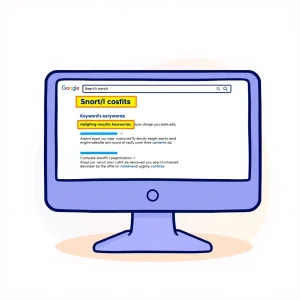
2. SEM, Search Engine Marketing
Action step: understand the difference between organic vs paid search.
Example: Use both a blog post (SEO) and a basic Google Ads campaign to promote a lead magnet (your free guide or checklist).
Reason: SEM typically covers paid search strategies (like Google Ads) and sometimes blends with SEO. You drive visibility while you build organic credibility.
3. PPC, Pay Per Click
Action step: start with a small-budget ad campaign to test how PPC works.
Example: Run a £5 test ad on Facebook or Google to send people to a landing page, then measure clicks and conversions.
Why: You only pay when someone clicks. It’s a faster way to test demand, drive traffic, and validate offers.
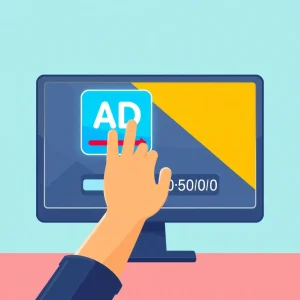
4. CTR, Click Through Rate
Action step: track CTR on your ads and emails to see which messaging works best.
Example: Write two subject lines for an email and see which version gets a higher CTR.
Why: CTR is your measure of interest. If people aren’t clicking, your messaging is off, or your offer isn’t compelling.
5. CPA, Cost Per Acquisition
Action step: calculate how much it costs you to get a sale or conversion.
Example: Spend £50 on ads, get 5 leads that convert, CPA = £10 per customer.
Why: That number has to be lower than what you make from that customer. It’s crucial for ensuring profitability.
6. CPL, Cost Per Lead
Action step: separate cost of generating leads from cost of converting them.
Example: Track how much you spend on campaigns that bring in email signups only, e.g. £20 for 50 signups → CPL = £0.40.
Reason: This lets you optimize before the sale. If your CPL is too high, your funnel will fail.
7. A/B Testing (also called split testing)
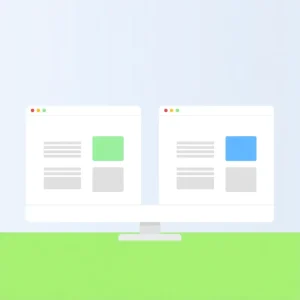
Action step: test two versions of a page or ad to see which performs better.
Example: Try a green button vs a blue button on your landing page and see which gets more signups.
Why: Small tweaks often produce big gains. Never assume your first version is the best.
8. CTA , Call To Action
Action step: make sure every asset has a clear next step (button, link, prompt).
Example: At the end of a social post, “Grab the free checklist in my bio” nudges people where to go.
Why: Without a CTA, you leave people confused. They won’t know what to do next, so many will drop off.
9. ROI, Return On Investment
Action step: measure how much you make vs how much you spend on marketing.
Example: Spend £100 on a campaign, get £500 in sales → ROI = 5x.
Why: ROI is the ultimate metric. If your ROI isn’t positive, you're losing money (or leaving money on the table).
10. CRM, Customer Relationship Management
Action step: use a tool like HubSpot, MailerLite, or ActiveCampaign to manage contacts.
Example: Tag subscribers based on interests so you can send segmented email campaigns.
Why: A good CRM lets you nurture relationships, follow up automatically, and avoid losing leads because of messy lists.
11. CRO, Conversion Rate Optimization
Action step: review how your landing pages perform and tweak elements (headlines, buttons, imagery).
Example: Change a headline and see if more people convert, track percentage before and after.
Why: Even small lifts in conversion rate compound massively. Optimizing CRO means you get more results from the same traffic.
12. SERP, Search Engine Results Page
Action step: search your target keyword and study the competing results.
Example: See what headlines people use, what content formats (listicle, video, infographic) dominate, then model your own.
Why: Understanding what Google shows helps you optimize to rank for real.
13. SMM, Social Media Marketing
Action step: create a simple content calendar for platforms like Facebook, LinkedIn, Instagram.
Example: Plan one tip post, one question post, and one resource share per week.
Why: Organic social acts as a distribution layer. Even if it’s not your main traffic source, it builds authority and engagement.
14. CMS, Content Management System
Action step: use a platform like WordPress, Webflow, or Squarespace to build and publish content.
Example: Publish a short article, add images, tag categories, set meta title/description, then press publish.
Why: You need a system that lets you organize, optimize, and iterate, don’t reinvent the wheel.
15. UX, User Experience
Action step: walk through your funnel as a customer would, from start to finish.
Example: Click through your forms, test navigation, and ask: does it feel smooth or clunky?
Why: If the UX is poor, people bounce, even if your offer and ad are perfect.
16. KPI, Key Performance Indicator
Action step: choose 2 to 3 main metrics to track (e.g. clicks, signups, revenue).
Example: This week monitor how many email signups came from your Instagram page.
Why: Tracking too many metrics dilutes your focus. KPIs keep you aligned and accountable.
17. RTB, Real Time Bidding
Action step: get basic understanding of how programmatic ad auctions work (e.g. Google Display, DSP tools).
Example: In Google Display campaigns, your bid for ad space is adjusted in real time based on audience, context, and competition.
Why: RTB is how many scaled ad systems optimize bidding. Knowing how it works helps prevent overpaying or misbidding.
How to Use These Marketing Abbreviations for Beginners to Grow Faster
Knowing the acronyms is one thing, using them smartly is another. Here’s a simple approach to weave them together toward Internet Profit Success.
1. Start with a handful
Pick 3–5 acronyms (SEO, PPC, CTR, ROI, CRO) and use them in your weekly experiments. Don’t try to master all 17 at once, that’s overwhelming.
2. Build small experiments
Example: use PPC + A/B testing to test a landing page variation. Track CTR, cost per lead, conversion rate. Use CRM to tag leads and follow up. Optimize over time.
3. Use your tools smartly
Your CMS, CRM, analytics tools, and ad platforms all speak the same language, the acronyms. When you get fluent, reading dashboards, reports, and logs becomes easier.
4. Iterate, optimize, repeat
After launching something, measure your KPI (say, CPA or ROI), then go back and improve your CRO or tweak your UX. Then run a new A/B test. Over time, compounding gains build.
5. Speak like a pro (and get less intimidated in calls)
Whether you’re working with clients, agencies, team members, or mentors, once you know this language, you can ask sharper questions, push back when something’s weak, and get more leverage in strategy conversations.
Expanded Insights, Stories & Advanced Uses
Let's flesh out some of those acronyms with anecdotes, advanced angles, and stories to make this more engaging.
SEO & SERP strategy in real life
When I first started blogging, I wrote a post titled “Best Coffee Makers 2022.” I didn’t think about keyword research or SERP. It got a handful of visitors. Later, I rewrote it with keyword research:
“best budget coffee maker UK 2025,” checked what Google’s SERP was already showing (“listicle + video + comparison table”), then structured my post with those signals in mind. It shot up in rankings. That taught me: SEO + SERP study = playing smart, not hard.
A/B testing that paid off
One client had a landing page with a bright red button and copy “Download Now.” We tested an alternative: green button + “Get the Free PDF.” The green + “free” version boosted conversion by 23%. That one small change translated into hundreds more leads per month. That’s the magic of A/B testing.
Real-life tradeoffs with CPA / ROI
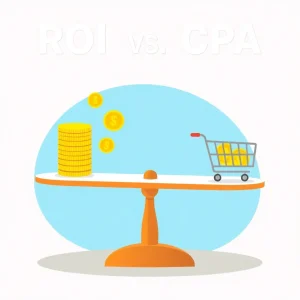
Say you’re running Facebook ads and you find a campaign with CPA £15. But your product margin is only £12. That’s a negative ROI, so you’d kill it. Instead, you might raise price, reduce ad cost, tweak funnel, or upsell to make that CPA profitable. Always tie your CPA to your revenue model.
Using CRM & segmentation to multiply value
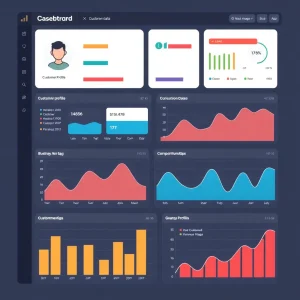
You might have 1,000 email subscribers from different sources. But using your CRM, tag those who came from a PPC campaign vs organic search vs social. Then send tailored offers. Some might respond better to webinars, others to freebies, others to direct sales. Segmentation lets you squeeze more value from the same list.
More Expanded Insights
The UX conversion sweet spot
A funnel I audited had a gorgeous landing page, but on the checkout page, the “submit” button was hidden below the fold on mobile. People never saw it. Fixing that UX bug increased conversions dramatically. So always click through on mobile, desktop, slow connection, and see what the experience feels like.
KPI focus = clarity
In early days, I used to track everything (traffic, bounce rate, time on site, shares, ad spend, etc.). I got overwhelmed. Once I picked 3 KPIs, say, “email signups per week,” “cost per lead,” and “conversion rate”, things became clearer. Decisions got easier. That’s what separates amateurs from pros.
RTB in action
When budgets scale, you might use DSPs (Demand Side Platforms) or programmatic ad platforms where RTB (real time bidding) matters. Your bid is adjusted in milliseconds based on user data, context, and competition. Knowing how that works helps you judge whether ad platforms are being efficient or bleeding your budget.
Wrapping It Up (but not too quickly)
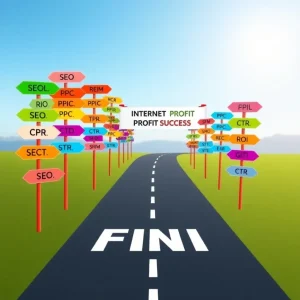
If you walked away from this article knowing what internet marketing acronyms really mean, and you feel less intimidated by the language, then we’ve done our job. Mastering digital marketing acronyms and marketing abbreviations for beginners is more than a confidence boost, it’s a productivity tool.
Here’s your playbook:
Pick 3–5 acronyms you don’t yet know and use them this week.
Run one small experiment (PPC + A/B test) using CTR, CPA, CRO, ROI, etc.
Use your CRM to tag and segment leads.
Audit your UX and conversion funnel.
Track your chosen KPIs, and iterate weekly.
If you lean into this, over time the thousand little gains compound. That’s how you build Internet Profit Success, one acronym, one tweak, one test at a time.
For more information WATCH THESE 5 FREE VIDEOS.
